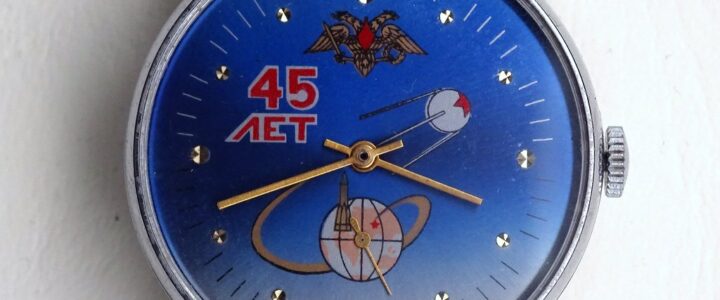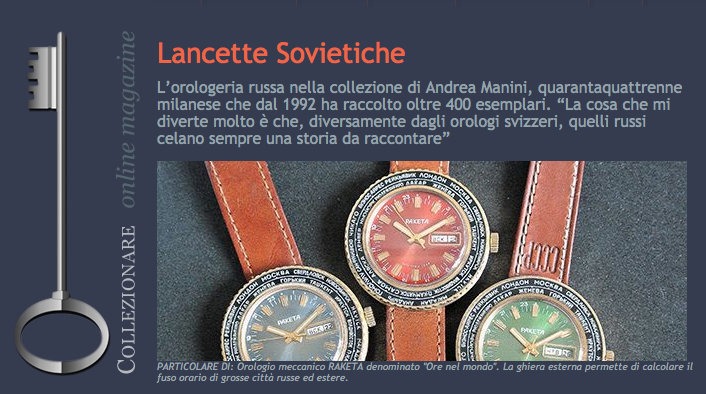The Poljot brand represents one of the most significant symbols of the Russian watchmaking industry, with a history rich in technical successes and space adventures. Since its founding, Poljot has embodied the Soviet ambition to achieve technological self-sufficiency and establish itself as a world leader in watch production.
The Origins: From the United States to the Soviet Union
In the late 1920s, the Soviet Union relied heavily on imported watches, a necessity that cost the government precious gold. To end this dependency, it was decided in 1927 to start domestic watch production. In 1929, through the Amtorg Trading Corporation, the Soviet government purchased the facilities of two bankrupt American factories: the Ansonia Clock Company and the Dueber-Hampden Watch Company. Twenty-one former Dueber-Hampden employees moved to Moscow to train local workers, marking the beginning of the First Soviet Watch Factory.
Initially, the factory produced four main models: a 15-jewel pocket watch for the Ministry of Communications, a 7-jewel wristwatch for the Red Army, a 7-jewel civilian pocket watch, and a 15-jewel ladies’ wristwatch. Thanks to the training received, local workers soon managed production autonomously.
The War Period and Innovation
With the German invasion during World War II, the factory was relocated to Zlatoust and returned to Moscow in 1943. During this period, the factory also began producing ammunition. In 1946, the K26 Pobeda model was launched, followed in 1949 by the Sturmanskie model, designed exclusively for military aviation. This watch became famous when Yuri Gagarin probably wore it during the first human space flight on April 12, 1961.
In the 1950s, the factory continued to innovate, introducing the first automatic watch under the Rodina brand in 1956 and special models for unique missions, such as the Soviet Antarctic expedition in 1957. That same year, to celebrate the success of the Sputnik mission, commemorative watches were produced, remaining in production for only one year.
The Establishment of the Poljot Brand
In 1960, the first models bearing the Poljot name, which means “flight” in Russian, were launched. The brand became synonymous with quality and precision, exporting watches worldwide. The Strela chronograph, inspired by the Swiss Venus 150, was used by Alexei Leonov during the first spacewalk in 1965.
With the introduction of the Poljot brand in 1964, the factory consolidated all its models under a single label. The 1970s saw a renewal of available movements and the acquisition of production lines from the Swiss Valjoux, leading to the creation of the 3133 movement, a chronograph used for both military and civilian purposes.
The Post-Soviet Era and Revival
After the dissolution of the Soviet Union in 1992, Poljot was named the official supplier to the President of the Russian Federation. The company ceased quartz watch production to focus on a niche market, introducing new lines based on modified 3133 movements. However, the company had to downsize and sell machinery to other companies, leading to the founding of Volmax by some former Poljot employees.
Despite the challenges, in 2003, Poljot adopted the name First Moscow Watch Factory, continuing production for the international market. Today, the Poljot brand is recognized for its tradition of precision and reliability, keeping alive a history inseparably linked to aviation and space adventures.
Curiosities and Iconic Models
Among the most famous Poljot models are the “Sturmanskie” worn by Gagarin and the “Strela” chronograph, symbols of Russian space exploration. Poljot watches are handcrafted by skilled artisans, giving them a distinctive and unique character. Limited editions and the “Aviator” collection are particularly appreciated by collectors for their bold design and cockpit readability.
Insights into Poljot’s History
The 1930s: The Birth of the Soviet Watch Industry
In 1930, with the construction of the factory in Moscow, watch production began at a brisk pace. The first watches produced still bore the Dueber-Hampden brand, but soon Soviet technicians managed to develop entirely new models. The First Soviet Watch Factory, renamed in 1935 in honor of Sergei Kirov, achieved notable success, producing millions of pocket and wristwatches.
The 1940s: War and Reconstruction
During World War II, the factory was evacuated to Zlatoust to avoid capture by the Germans. During this period, besides producing watches, the factory contributed to the war effort by manufacturing ammunition and other military materials. After the war, in 1946, the factory launched the famous Pobeda model, a symbol of Soviet victory.
The 1950s and 1960s: The Space Era
In the 1950s, Poljot began producing watches for military aviation and Soviet cosmonauts. The Sturmanskie model, worn by Gagarin during his historic space flight, became an icon. With the launch of the first artificial satellite Sputnik in 1957, Poljot celebrated the event with a commemorative watch. Producing automatic watches and chronographs became a priority, leading to the creation of models such as Rodina and Strela.
The 1970s and 1980s: Innovation and Expansion
During the 1970s, Poljot continued to innovate, introducing advanced movements such as the 3133 chronograph. The factory acquired production lines from the Swiss Valjoux, enabling the production of high-quality watches for both military and civilian markets. The 1980s saw an increase in exports, with Poljot becoming an internationally recognized brand.
The Foundation of Volmax and the End of 3133 Production
In the late 1990s, Poljot ceased quartz watch production to focus on high-quality mechanical movements. However, economic difficulties led to the sale of movement production machinery to other companies, including Vostok. In 2002, some discontented employees left Poljot to found Volmax, a company that continues to produce watches under the Aviator, Buran, and Sturmanskie brands.
In 2003, Poljot adopted the name First Moscow Watch Factory, limiting the Poljot brand to the domestic market. Production of the 3133 chronograph movement, a milestone in Poljot’s history, ceased definitively in 2011, marking the end of an era.









